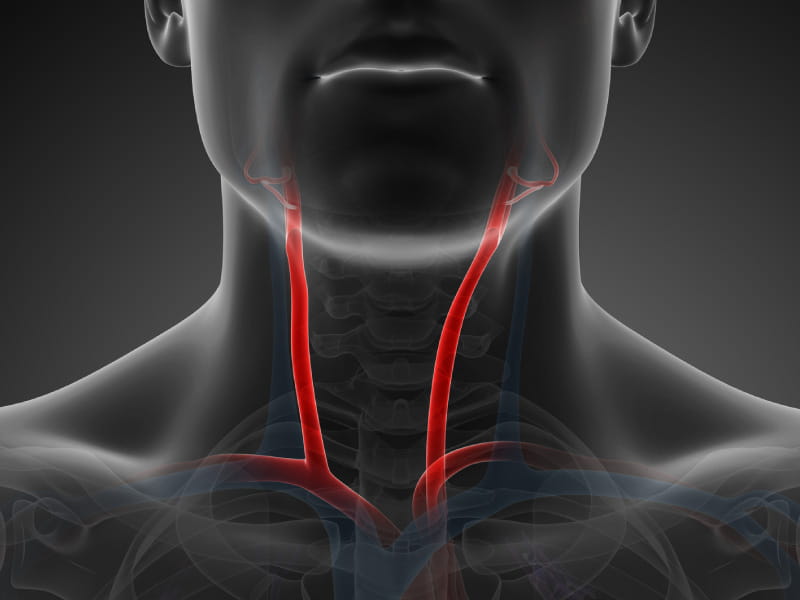Smartphone video may help detect narrowed neck arteries that can lead to strokes
By American Heart Association News

Narrowed arteries in the neck – a major risk factor for stroke – may be detected by analyzing smartphone video that picks up the motion of blood flowing just beneath the skin, a small study shows.
The research, published Wednesday in the Journal of the American Heart Association, may be useful in developing a non-invasive, early screening tool for detecting blockages in the carotid arteries that can lead to strokes.
"Between 2% and 5% of strokes each year occur in people with no symptoms, so better and earlier detection of stroke risk is needed," study author Dr. Hsien-Li Kao said in a news release. He is an interventional cardiologist at National Taiwan University Hospital in Taipei.
"This was an exciting 'eureka' moment for us," he said. "Existing diagnostic methods – ultrasound, CT and MRI – require screening with specialized medical imaging equipment and personnel. Analysis of video recorded on a smartphone is non-invasive and easy to perform, so it may provide an opportunity to increase screening."
The carotid arteries, found in the neck, can become blocked by a buildup of fatty deposits known as plaque. That condition – carotid artery stenosis – restricts blood flow to the brain and may lead to an ischemic stroke. Nearly 87% of all strokes in the U.S. are this type of stroke.
The carotid artery is just below the skin's surface. When velocity and blood flow patterns change, those changes are reflected in the motion of the overlying skin, Kao said. However, those differences cannot be detected by the naked eye.
In the study, researchers used motion magnification and pixel analysis to detect subtle changes in pulse characteristics on the skin's surface captured in 30-second smartphone video recordings. An older-generation smartphone was used to make video clips of the necks of 202 Taiwanese adults, who were an average 68 years old when the study took place between 2016 and 2019. While recordings were being made, participants lay on their backs with their heads tilted back in a custom-made box that restricted movement.
Among participants, 54% had previously been diagnosed with a blockage of 50% or more in the carotid artery. The phone videos were 87% accurate in predicting who had a blockage in the artery. Narrowing in the arteries was confirmed using a Doppler ultrasound test.
Kao said further research could determine whether it is possible to take recordings and perform the motion analysis remotely, in conjunction with a downloadable app.
"More research is needed to determine whether video recorded on smartphones is a promising approach to help expedite and increase stroke screening," he said. "Carotid artery stenosis is silent until a stroke happens. With this method, clinicians may be able to record a video of the patient's neck with a smartphone, upload the videos for analysis and receive a report within five minutes. The early detection of carotid artery stenosis may improve patient outcomes."
If you have questions or comments about this American Heart Association News story, please email [email protected].





